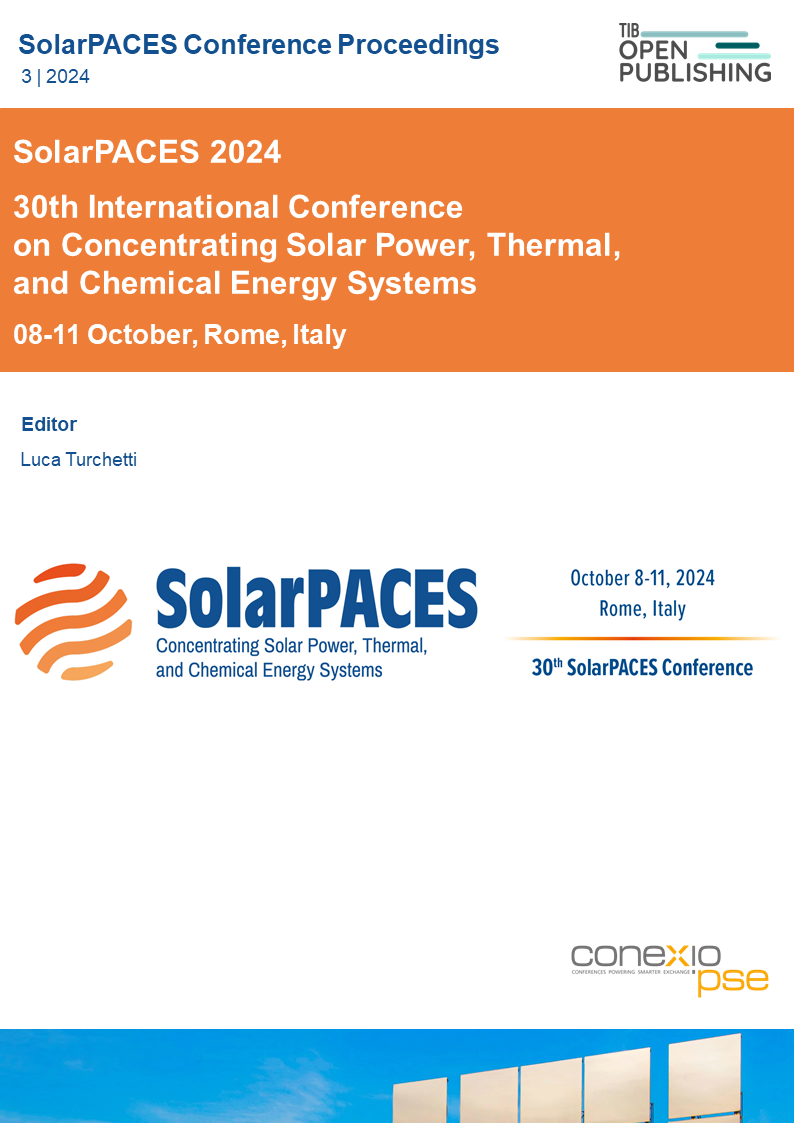Hedging Risk in Techno-Economic Assessment for CSP Plants Through Synthesis of One-Minute Irradiance Series
DOI:
https://doi.org/10.52825/solarpaces.v3i.2351Keywords:
Irradiance Downscaling, Satellite Estimation, CSPAbstract
For the proper sizing of a solar plant, thorough simulations are performed to obtain the optimum configuration for the optimization objective, such as to minimize the Levelized Cost of Energy. These simulations consider the use of a Typical Meteorological Year, that condenses in a single year the long-term meteorological characteristics. These data sets are often derived from satellite estimates and validated against ground measurements taken over a shorter period of time. One issue with these data sets is concerned with temporal resolution, as they are limited by the capacity of the satellite to resolve phenomena on a temporal scale. This results in a loss of high-frequency detail that could affect the techno-economic design and assessment of a solar plant, creating uncertainty in the expected performance when compared to ground data, thus increasing project risk. This work explores the effect of applying a temporal downscaling technique to generate one-minute estimates of ground radiation from hourly satellite data in the reduction of uncertainty in technical and economic key performance indicators. A Concentrated Solar Power plant of 100MWe and 12 hours of storage is studied and results are compared to determine the extent to which temporal downscaling allows to hedge estimation of performance and in turn, risk. Results show that while the most significant source of uncertainty is the estimation error inherent to the satellite procedure, temporal downscaling allows for a reduction of 2.1% in LCOE estimation, showing that a relatively simple post-processing procedure allows for a measureable reduction in investment risk.
Downloads
References
[1] Polo J, Wilbert S, Ruiz-Arias JA, Meyer R, Gueymard C, Súri M, et al. Preliminary survey on site-adaptation techniques for satellite-derived and reanalysis solar radiation datasets. Sol Energy 2016;132:25–37. https://doi.org/10.1016/J.SOLENER.2016.03.001.
[2] Cebecauer T, Suri M. Typical Meteorological Year Data: SolarGIS Approach. Energy Procedia 2015;69:1958–69. https://doi.org/10.1016/j.egypro.2015.03.195.
[3] Buster G, Rossol M, Maclaurin G, Xie Y, Sengupta M. A physical downscaling algorithm for the generation of high-resolution spatiotemporal solar irradiance data. Sol Energy 2021;216:508–17. https://doi.org/10.1016/j.solener.2021.01.036
[4] Castillejo-Cuberos A, Cardemil JM, Escobar R. Temporal downscaling of solar radiation components using an analytical model for variability modeling. Renew Energy 2024;229:120783. https://doi.org/10.1016/j.renene.2024.120783.
Published
How to Cite
Conference Proceedings Volume
Section
License
Copyright (c) 2025 Armando Castillejo-Cuberos, Ignacio Arias, José Cardemil, Rodrigo Escobar

This work is licensed under a Creative Commons Attribution 4.0 International License.
Accepted 2025-04-30
Published 2025-10-14
Funding data
-
Agencia Nacional de Investigación y Desarrollo
Grant numbers ANID PFCHA Doctorado Nacional 2021-21210053;ANID/FONDECYT Postdoctorado 2022 #3220686;ANID/FONDECYT 1231186;ANID/FONDAP 1523A0006
